Sealife guideOcean's backbone: exploring the diversity of marine vertebrates
Last updated on 08/22/2025 at 10:42 PM
Astonishing diversity
Marine vertebrates encompass an incredible variety of animals, from tiny reef fish to ocean giants like the blue whale. Their common trait: a backbone that supports their body and protects the central nervous system.
These species have adapted to environments ranging from shallow coastal waters to the abyssal depths where sunlight never penetrates. Their anatomy, physiology and behavior reflect millions of years of evolution in aquatic environments.
Groups with unique adaptations
Several major groups make up marine vertebrates: cartilaginous fish (sharks and rays), bony fish, marine mammals (dolphins, seals, sea lions, whales), as well as certain sea turtles and sea snakes.
Indeed, marine vertebrates are represented by four major classes, namely:
- the class of Marine mammals21 species
- the class of Seabirds36 species
- the class of Marine fish685 species
- the class of Marine reptiles12 species
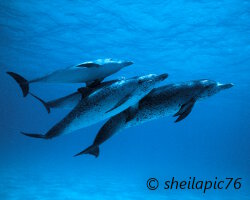
Atlantic spotted dolphin
(Stenella frontalis)
(Stenella frontalis)
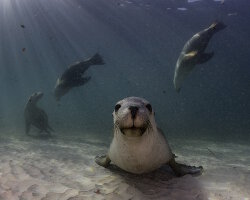
Australian sea lion
(Neophoca cinerea)
(Neophoca cinerea)

Narwhal
(Monodon monoceros)
(Monodon monoceros)
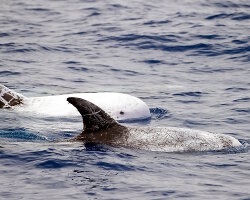
Rissos dolphin
(Grampus griseus)
(Grampus griseus)

Atlantic puffin
(Fratercula arctica)
(Fratercula arctica)
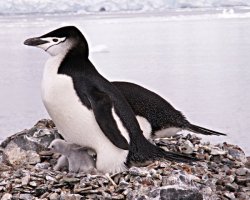
Chinstrap penguin
(Pygoscelis antarcticus)
(Pygoscelis antarcticus)
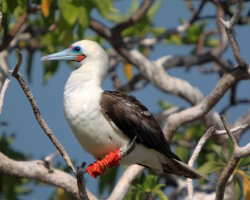
Red-footed booby
(Sula sula)
(Sula sula)
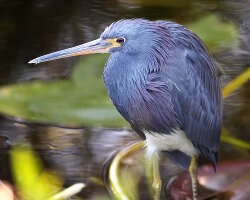
Tricolored heron
(Egretta tricolor)
(Egretta tricolor)

Atlantic guitarfish
(Rhinobatos lentiginosus)
(Rhinobatos lentiginosus)
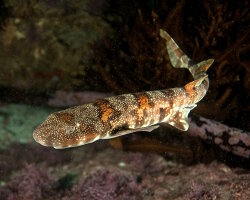
Dark shyshark
(Haploblepharus pictus)
(Haploblepharus pictus)
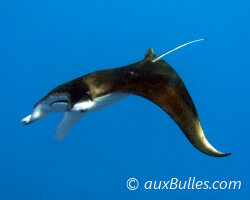
Giant manta
(Mobula birostris)
(Mobula birostris)

Zebra bullhead shark
(Heterodontus zebra)
(Heterodontus zebra)
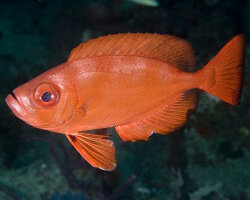
Atlantic bigeye
(Priacanthus arenatus)
(Priacanthus arenatus)
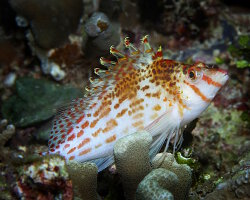
Dwarf hawkfish
(Cirrhitichthys falco)
(Cirrhitichthys falco)

Lined rabbitfish
(Siganus lineatus)
(Siganus lineatus)
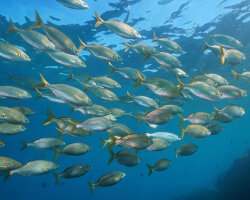
Salema
(Sarpa salpa)
(Sarpa salpa)
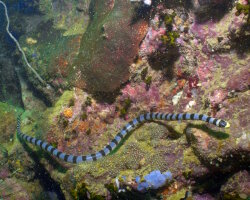
Banded sea snake
(Laticauda colubrina)
(Laticauda colubrina)
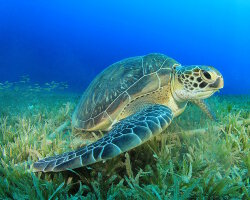
Green sea turtle
(Chelonia mydas)
(Chelonia mydas)
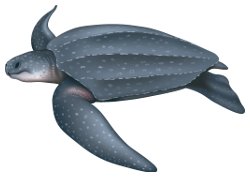
Leatherback sea turtle
(Dermochelys coriacea)
(Dermochelys coriacea)
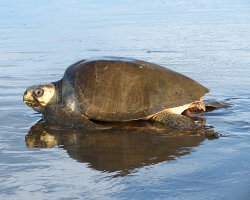
Olive ridley sea turtle
(Lepidochelys olivacea)
(Lepidochelys olivacea)
Each group displays remarkable adaptations: efficient gills to extract dissolved oxygen, fins and streamlined bodies to reduce water resistance, or lungs and the ability to dive for long periods for air-breathing species. This diversity allows them to occupy a wide range of ecological niches, from fast-moving hunters to peaceful filter feeders.
A Key Role in the Ocean Ecosystem
These vertebrates play an essential role in maintaining the balance of marine ecosystems. Predators regulate prey populations, herbivores help preserve the health of seagrass beds and some species even contribute to nutrient cycling: by feeding in deep waters and releasing waste near the surface, they transport key nutrients (nitrogen, phosphorus, iron) to sunlit zones where phytoplankton, at the base of the marine food web, can thrive.
However, many species are now threatened by overfishing, accidental bycatch in fishing gear, pollution and climate change. Studying and understanding them is crucial to protecting not only these species, but also the overall health of the oceans on which all life depends.
Discover marine vertebrates

Atlantic spotted dolphin
(Stenella frontalis)
(Stenella frontalis)
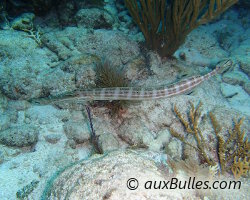
Atlantic trumpetfish
(Aulostomus maculatus)
(Aulostomus maculatus)
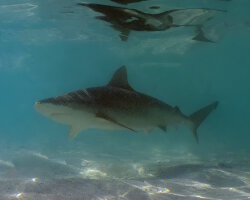
Blacknose shark
(Carcharhinus acronotus)
(Carcharhinus acronotus)
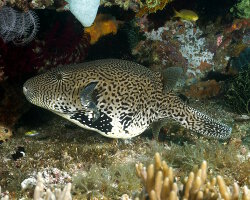
Guineafowl puffer
(Arothron meleagris)
(Arothron meleagris)

John dory
(Zeus faber)
(Zeus faber)
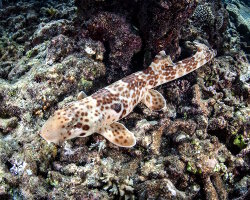
Raja epaulette shark
(Hemiscyllium freycineti)
(Hemiscyllium freycineti)
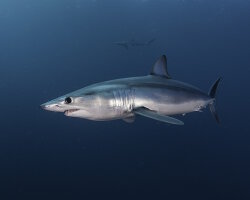
Short fin mako
(Isurus oxyrinchus)
(Isurus oxyrinchus)
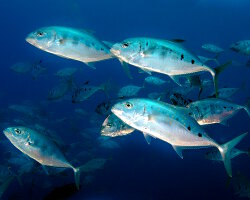
Yellowspotted trevally
(Carangoides fulvoguttatus)
(Carangoides fulvoguttatus)
Our latestUpdates

Friday, December 19th 2025
The magic of Christmas decorations
Discover Christmas decorations in Florida: giant trees, illuminated palm trees, magical light displays and tropical settings to experience the holiday magic under the sun.
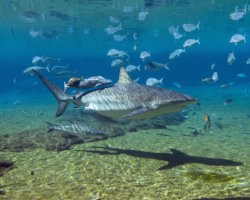
Monday, December 15th 2025
The dusky shark
Discover the dusky shark, one of the world's largest coastal sharks, and learn why this powerful predator is essential to marine ecosystems.

Friday, December 12th 2025
Christmas magic at Disney hotels
Experience the magic of Christmas at Disney hotels: enchanting decorations, giant Christmas trees, dazzling lights and a festive holiday atmosphere.
Photo of the Day
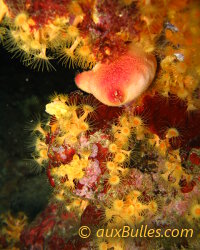
Anémone encroûtante
(Parazoanthus axinellae)
(Parazoanthus axinellae)
